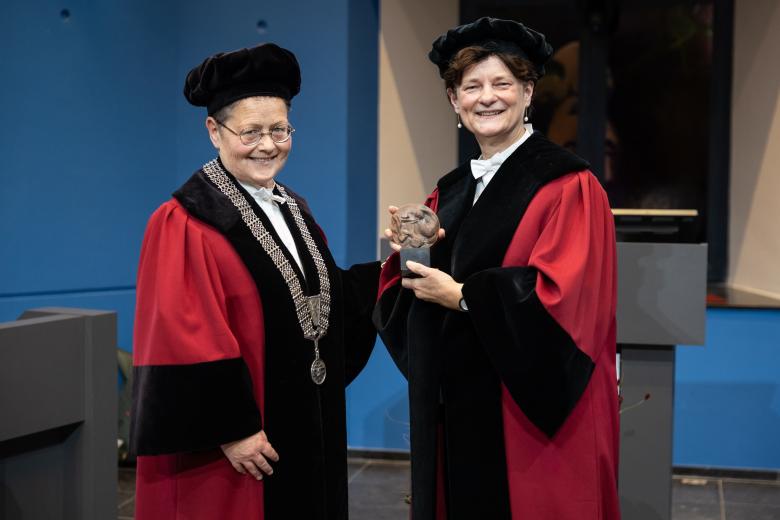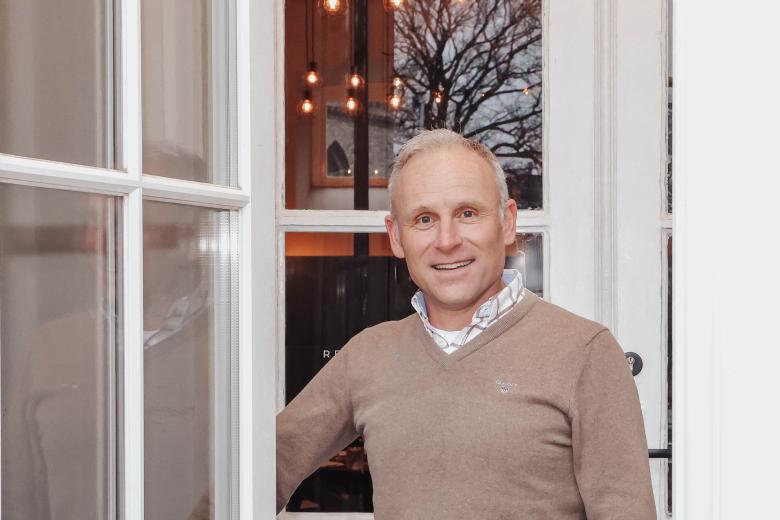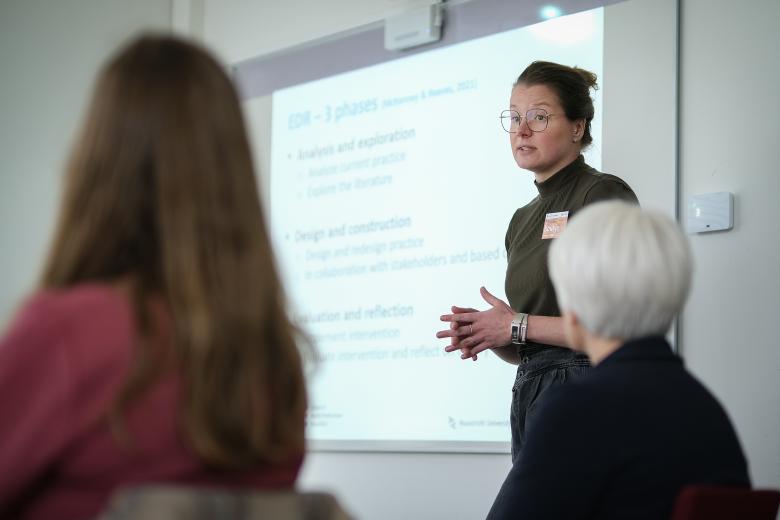Letting bone and cartilage repair themselves
When you have a wound on your skin, the skin usually repairs itself in a few weeks. That principle forms the basis of regenerative medicine: investigating how the body can repair itself with minimal external cues. Tim ten Brink is conducting research in this field. He is a fourth-year PhD candidate in the department Complex Tissue Regeneration (CTR) at MERLN and focuses on developing implants for damaged bone and cartilage. Tim: “It would be wonderful if this research becomes a first step towards personalised treatment for patients.”
Tim had been interested in biomedical sciences since high school. “That’s why I chose a bachelor’s programme at University College Venlo, part of Maastricht University, which offered a wide range of both biomedical and pharmacological courses,” he says. “My interest in regenerative medicine really took off there. To me it’s fascinating to see how the body can repair itself with minimal external cues. A good example is the liver: this organ can lose more than half of its surface area and will still be able to repair itself completely. I would like to explore how we can use regeneration to let the body heal itself, so eventually there is less need for invasive surgery.”
Joints
After his bachelor’s, Tim started his master’s in biomedical sciences in Maastricht. He completed his thesis at MERLN and started his PhD there after graduation. “I am focusing on load-bearing joints,” he says. “These are bones covered by cartilage that carry weight, such as the hips, knees and shoulders. Over the years, the tissue becomes increasingly thinner due to wear and tear. In some cases, the damage becomes so severe that it leads to or accelerates diseases such as osteoarthritis. This causes progressive damage, which often ends in the need for a new knee of hip. We often see this in elderly people, but it can also occur in younger individuals, for example athletes or people who have had accidents.”
With successful results, we hope to take the next step towards patient-centred treatment methods.
Implants
As part of 3D-Mentor, a project led by Lorenzo Moroni and funded by a Vici grant, Tim focuses on developing implants. “With these, we aim to replace damaged bone and cartilage tissue,” he says. “The material for these implant needs to be biomodular, biocompatible and biodegradable. This means the material should resemble the original tissue as much as possible, be suitable for implantation in the body without causing rejection, and be broken down over time by the body’s own cells. We also look at the size and the shape to ensure the implant fits perfectly within the damaged area. On top of that, we make sure the implant can withstand mechanical pressure, as it has to be able to carry the person’s weight.”
Stem cells
How do you make such an implant? “Using that biomodular, biocompatible and biodegradable material, we 3D-print a kind of skeletal structure, shaped like the original tissue,” Tim explains. “We then integrate stem cells into this structure. These are cells that have not differentiated into a specific lineage yet, so it is not yet decided what they will eventually become. We place the structure with the cells in a bioreactor, where they are subjected to mechanical pressure. This stimulates the cells to become bone or cartilage later on. Eventually we hope to be able to implant this in patients, so that it can bear the load of daily movements. The aim is for the stem cells in the implant to form new bone or cartilage. Once the implant is broken down by the body, the newly created tissue takes over the function of the implant.”
Personalized treatment
At the moment, the research is primarily lab-based. “With successful results, we hope to take the next step towards patient-centred treatment methods,” Tim says. “Now, our research is mainly fundamental and in an early stage. We are examining how our materials and external cues affect the ability of stem cells to form new tissues. If that goes well, we want to explore whether these implants can be tailored to the needs of individual patients. Ideally, when a patient comes in with bone or cartilage damage, we would like to be able to recreate that tissue one-to-one using the 3D printer. It would be wonderful if this research takes a first step towards creating personalised treatment for patients.”
Text and photo: Joëlle van Wissen
Also read
-
Prof. dr. Mirjam oude Egbrink awarded MUMC+-medal
During her farewell lecture on Friday, 28 November, Prof. Mirjam Oude Egbrink was awarded the MUMC+ medal by Dean Annemie Schols for her distinguished career.
-
Jeroen Hendriks: first professor of Nursing Sciences at MUMC+ in a long time
Jeroen Hendriks (CAPHRI) has been Professor of Nursing Science since last year and will deliver his inaugural lecture on 4 December 2025.
-
You’re human too! Making tutorial sessions at UM more inclusive
How can tutors make small-group learning at UM genuinely inclusive? In this article, Boukje Compen highlights small, practical steps tutors can take to help students connect, create a safe learning environment, and learn from each other’s perspectives.